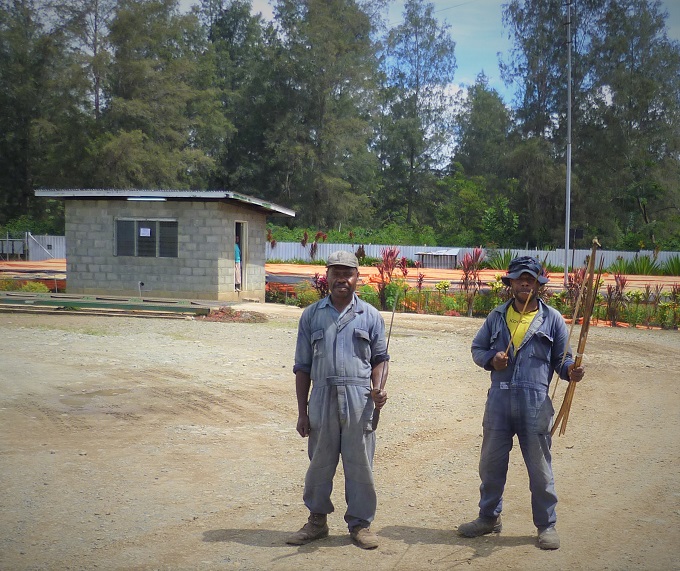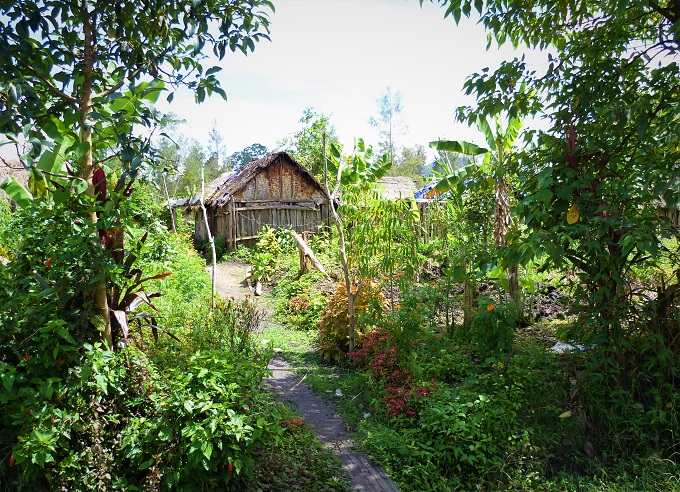In a world that is rapidly losing all of its wild places, Papua New Guinea’s Highlands region is still teeming with life of all forms as well as fascinatingly unique traditional cultures. Unimaginable diversity, both biological and cultural, is the overwhelming first impression that a new visitor will receive. Chaos may be a close second. […]
Month: February 2019
Papua New Guinea – The Wild West of Coffee Production

Papua New Guinea is a fascinating region, even for those who are not interested in coffees – rich history, unique cultures, unparalleled biodiversity, and isolation from world markets have made this young nation truly unique. Nowhere else on earth will we find the same combination of ancient traditional life-ways with the chaos and opportunity brought […]
Read More… from Papua New Guinea – The Wild West of Coffee Production
RWANDA MISOZI FT ABAKUNDAKAWA PEABERRY 14+
A tasty new crop (2018/19) Rwanda at a steal of a price. An upfront warning, this is a nice screen of coffee (few to no broken beans) but is a small screen. It will still work in any home roaster but you may want to shake your Behmor drums before putting them into the machine […]
RWANDA FTO RFA DUKUNDE KAWA MUSASA – MBLIMA
New 2018/19 Crop! Rwanda FTO Dukunde Kawa Musasa Mblima is sourced from family owned farms organized around the Musasa mill located near a gorilla habitat in the Gakenke district of Rwanda. Farm plots are so small that measurements are based on the numbers of trees, not area of land. Farmers who process their coffee at […]
PAPUA NEW GUINEA – KIMEL ESTATE PB
Before we found some personal friends in Papua New Guinea, this is the coffee we used to rely on. Awesome folks even though at the time we had never met them. One of the few Estate produced coffees (a bit smaller than Carpenter) and located just a couple miles down the road. A couple years […]
PAPUA NEW GUINEA – CARPENTER ESTATES – BUNUM WO KULA PB
This season we went with what they call Kula processing. Kula processing means only dried on raised drying beds and double screened via color sorter and double hand picking. Basically means the best of the best from Carpenter Estates. Bunum Wo was the first section of Carpenter Estates that I went to visit. Very impressive […]
Read More… from PAPUA NEW GUINEA – CARPENTER ESTATES – BUNUM WO KULA PB
KENYA NYERI OTHAYA KAMOINI PB
A great super fresh arrival! This could be the one you Kenyan fans have been waiting for. Bright and clean as can be, almost a little teeth chattering at those light roast points. These beans are from family owned farms located on the southeastern slopes of the Aberdares mountain ranges in Nyeri County, Kenya. The […]
KENYA KIAMBU FAIRVIEW ESTATE AB
Usually Kenyan coffee lose some of their track-ability through the mill aggregation model. This cup is cool for its an estate produced offering, where is came from and the folks behind it are well known. Kenya Kiambu Fairview Estate AB Grainpro is sourced from the Fairview estate located in Kiambu County, Kenya. Fairview has its […]
INDONESIAN SUMATRA TAKENGON MANDHELING GRADE 1
Sumatra Takengon Grade 1 is sourced from the Jagong Mill and surrounding family-owned farms located in the Takengon and Atu Lintang coffee region of Aceh province on the island of Sumatra, Indonesia. Irham Junus owns and operates the Jagong Mill with his son, Andi and daughter, Ina. The Junus family has focused on meticulous ripe […]
Read More… from INDONESIAN SUMATRA TAKENGON MANDHELING GRADE 1
GUATEMALAN FRAIJANES PALO ALTO AZUL
Guatemala Fraijanes Palo Alto Azul is from Finca Agua Tibia, a farm managed by Industrias Agrícolas Centro Americanas. Finca Agua Tibia is located in the municipality of Fraijanes within the department of Guatemala, Guatemala. Finca Agua Tibia was established more than 150 years ago by Franciscan monks and has been producing coffee since 1940. Coffee processing […]
ETHIOPIAN NATURAL YIRGACHEFFE GR. 1 KOKE CO-OP
The Koke cooperative was established in 1975, and joined The Yirgacheffe Coffee Farmers Cooperative Union (YCFCU) in 2002. It currently has 1,153 member farmers. All of the members grow their coffee on plots of land under 4 hectares. By joining the YCFCU, the KOKE cooperative has benefited from being a part of a larger cooperative […]
Read More… from ETHIOPIAN NATURAL YIRGACHEFFE GR. 1 KOKE CO-OP
ETHIOPIAN HONEY YIRGACHEFFE GR. 1 KOKE CO-OP
The honey processed Koke is what got us first loving the Koke Co-op. Smack dab in the middle of a natural and washed processed as far a cup tones go. The Koke cooperative was established in 1975, and joined The Yirgacheffe Coffee Farmers Cooperative Union (YCFCU) in 2002. It currently has 1,153 member farmers. All […]
Read More… from ETHIOPIAN HONEY YIRGACHEFFE GR. 1 KOKE CO-OP
COLOMBIAN RFA ORG. FINCA BUENA VISTA
Finca Buena Vista is owned by Eneil Bayona and is located in the village of Minca. Eneil loves to produce coffee; it’s been in his family as long as he can remember. It hasn’t always been easy though, as he’d gotten discouraged by low coffee prices. Since then, he’s worked hard to make sure his […]
COLOMBIAN PREMIUM HUILA ACEVEDO
This cup is sourced from family-owned farms located in the communities of San Isidro, La Palma ,Las Brisas, El Recreo, and El Silencio in the municipality of Acevedo within the department of Huila, Colombia. The producers collaborate with an export company called Banexport to gain access to technical support for best agricultural practices. Banexport has […]
COLOMBIAN HIGH GROWN DIANA, OMAR & HARBY LOPEZ EL CORTIJO & VENECIA FARMS – CAFE SOCIAL
We found some great new friends in Colombia – the Lopez family. One of family; Omar, is here in our home town and runs a small craft roastery and coffee shop basically on the UW Madison Campus. There farms are in a lesser known more remote region we have never previously pulled coffee from – […]
BURUNDI BUZIRA-MURUTA WASHED
New 2018/19 crop – after not being able to source some good Burundi coffees last year we finally found two winning lots. Complex as can be, this is a cup that screams African. Burundi Buzira-Muruta Fully Washed 15+ Lot 31 is sourced from family-owned farms organized around the Coffee Processing Company (CPC), which was established […]
BURUNDI BUZIRA-MURUTA NATURAL
New 2018/19 crop – after not being able to source some good Burundi coffees last year we finally found two winning lots. Complex as can be, this is a cup that screams African. Burundi Buzira-Muruta Natural is sourced from family-owned farms organized around the Coffee Processing Company (CPC), which was established in 2010 by Salum […]
BURUNDI A KAYANZA MATRACO- BUSINDE STATION
The Kayanza province is in the northern part of Burundi, close to the border of Rwanda, located at an altitude of more than 1800m. Kayanza has the reputation of being one of the best coffee producing regions in Burundi. It is also known for being the water source of the Nile River. The Matsitsi Trading […]
BRAZIL MOGIANA 17/18
Many will like it as a single origin drinker but this can be used as an awesome blend base. Pretty neutral tasting and adopts flavors blended into it easily. Brazil Mogiana 17/18 is produced by farmers organized around cooperatives in the Mogiana growing region split between the states of São Paulo and Minas Gerais, Brazil. […]
Fresh Roast SR500 Roaster Tips

Using your new home coffee roaster! Here are some Fresh Roast SR500 tips. Review of Basics The Fresh Roast SR 500 home coffee roaster has three parts, the chaff collector on top, the roasting chamber, and the heated base. Start with four level scoops of coffee. Remove the chaff collector, add the coffee to the […]

